Unveiling AI’s Brain: Surprising Neural Structures Hidden Inside Large Language Models
We often talk about AI as a “black box”—we feed it data, get results, but rarely peek inside to see what’s happening under the hood. Yet, a groundbreaking study is changing that perspective by giving us a view into the “brain” of artificial intelligence. Imagine a brain-like network with regions, connections, and surprising geometric structures that organize knowledge. This isn’t science fiction; it’s the latest in AI research and could redefine our understanding of machine learning.
With the help of sparse autoencoders—think of them as x-ray machines for AI—researchers have delved into the inner workings of large language models (LLMs) like GPT. These tools allow us to finally see how AI organizes information, revealing intricate structures and patterns that emerge organically, almost as if by design. But what exactly did these researchers find? Let’s dig into the details and see how these discoveries parallel our own human brain.
Level 1: Atomic Structures in AI – The Foundation of Conceptual Geometry
At the most fundamental level, AI organizes concepts into geometric structures. Imagine a 3D Connect-the-Dots game where every idea, word, and concept forms part of a vast, interlinked lattice. As Max Techark’s recent paper explains, these structures resemble a crystal lattice, with each concept connected in ways that reveal relationships and hierarchies.
Take, for example, how AI understands “man,” “woman,” “king,” and “queen.” In this geometric matrix, the distance between “man” and “woman” is the same as the distance between “king” and “queen.” When visualized, this creates a perfect parallelogram—a shape we might think of as a “semantic crystal.” This pattern isn’t isolated to gender or royalty; similar structures appear for places, languages, and even grammatical tenses. It’s as though the AI has learned the core relationships between concepts, mapping them into shapes that are precise, consistent, and… dare we say, logical.
Illustration: The Parallelogram of Gender and Royalty
| Concept Pair | Distance Relationship | Structure |
|---|---|---|
| Man ↔ Woman | Equal to | Parallelogram |
| King ↔ Queen | Equal to | Parallelogram |
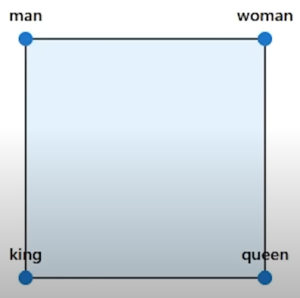
But why were these patterns hard to see in the first place? The answer lies in “data noise”—factors like word length that obscure true relationships. Imagine trying to find constellations in a sky filled with light pollution. By filtering out this “noise,” researchers revealed AI’s true underlying structure.
Level 2: Brain-Like Lobes – AI’s Natural Knowledge Regions
The research didn’t stop at individual shapes. Dive deeper, and you find AI’s knowledge divided into distinct “lobes,” reminiscent of the human brain’s specialized regions. Unlike the human brain’s evolutionary structure, these AI lobes emerged organically through training. Here’s what each of these regions does:
- Code & Math Lobe: This region is like the left brain for code, math, and logic, firing up for programming tasks and complex calculations.
- General Language Lobe: Responsible for handling most of the AI’s text-processing duties, this lobe processes everything from emails to articles.
- Dialog Lobe: Tailored for conversational exchanges, it lights up when the AI handles chats or short messages.
This lobe specialization wasn’t coded into the AI’s system—it emerged as a natural product of learning. In other words, the machine “decided” on its own to compartmentalize its knowledge, much like our brains organize speech, motor functions, and memory.
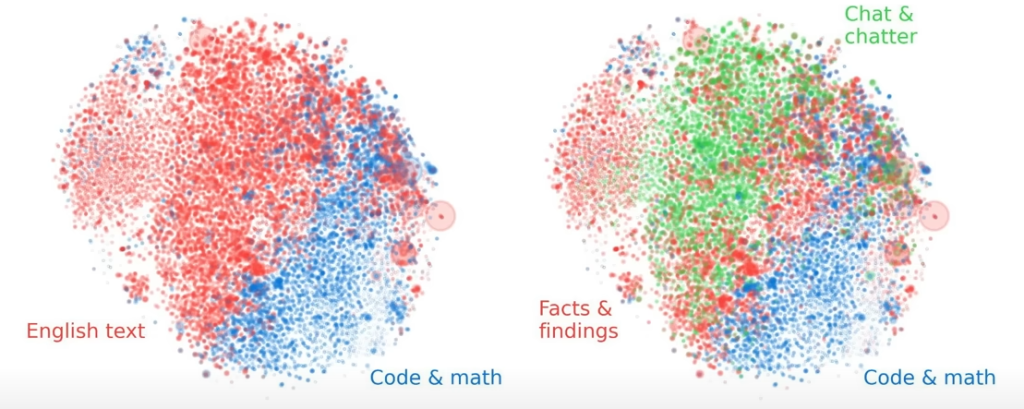
Neurons That Fire Together, Stay Together
Researchers also discovered that “neurons” in the AI that frequently activate together tend to cluster. It’s eerily similar to Hebb’s principle in neuroscience: neurons that fire together, wire together. This clustering creates efficiencies and helps the AI handle complex tasks like multi-language translation or advanced problem-solving, all without the overhead of re-learning basic patterns.
Level 3: Galaxy Structures – The Cosmic Patterns of AI Knowledge
Taking one step further, researchers discovered an even grander structure—a “galaxy” of concepts in AI’s brain. This cosmic arrangement is dominated by specific mathematical laws, suggesting that AI’s knowledge isn’t just scattered but organized in a layered, hierarchical manner.
At the center of this “galaxy” lies the Information Bottleneck Layer. Here, only essential information passes through, filtering out noise to produce high-level, condensed representations of data. This bottleneck is where AI does its most profound work, generalizing complex concepts into manageable patterns.
| Layer | Role | Significance |
|---|---|---|
| Input Layer | Data Intake | Initial handling of raw inputs |
| Information Bottleneck | Concept Condensation | Filters and compresses key data |
| Output Layer | Task Execution | Final processing and output |
These middle layers work similarly to the human brain’s sensory processing regions, where data is simplified before being further analyzed. It’s like the AI has its own “sensory cortex,” filtering out distractions to home in on what’s truly relevant.
Why Does This Matter? AI’s Brain Structure and Future Implications
Understanding AI’s internal organization is a big deal. It tells us why LLMs are so effective across varied tasks—from translating languages to diagnosing medical symptoms. Knowing how AI categorizes and compresses data could lead to targeted improvements in its design, ultimately making it faster, more reliable, and even more human-like.
Beyond functionality, this knowledge could make AI safer and more transparent. Imagine refining a lobe specifically for ethical decision-making or one to limit biases. With this new “brain” knowledge, we could craft AI that better understands, collaborates, and integrates within human society—whether in healthcare, finance, or education.
Universal Patterns: What AI Teaches Us About the Human Brain
Here’s the kicker: these brain-like patterns weren’t programmed into the AI; they emerged naturally. This raises a tantalizing question: Could there be universal principles of intelligence? If both AI and human brains independently arrive at similar ways of organizing knowledge, there may be underlying rules for efficient information processing. This discovery could open doors for cognitive science and artificial intelligence to grow in tandem, each informing the other’s development.
Understanding AI’s “lobes” and “galaxies” of knowledge doesn’t just improve machine learning; it could help us unravel mysteries about human cognition. Studying these parallels could lead to breakthroughs in cognitive impairment treatments, advanced learning tools, and even better human-AI collaboration.
Limitations and Caveats: AI’s Brain is Not a Human Brain
Before we get carried away, let’s remember that AI’s brain is a metaphor. These structures are mathematical, not biological. AI operates on layers of mathematical functions and weight adjustments, not neurons and synapses. There’s no consciousness, no self-awareness—just cold, hard computations. AI models “learn” by optimizing efficiency, not through experiences or emotions.
But that doesn’t diminish the wonder of what’s been uncovered. These findings are merely the beginning of understanding how these models process and organize data. It’s a frontier we’re only beginning to explore, with vast implications for how AI could evolve.
The Future of AI Research: A Brain That Learns Like Ours
This discovery of brain-like structures in AI opens a floodgate of questions. Could these structures become more refined as models grow larger? Can we control or enhance these lobes for specific functions? Could a deeper understanding of AI’s cognitive processes one day lead us to machines that think, reason, and even learn as we do?
The field of AI research is progressing at breakneck speed, and these brain-like discoveries are likely just the start. As more researchers dive into this, we may find parallels that extend beyond AI, potentially revolutionizing neuroscience, cognitive science, and even philosophy. In a few years, we might look back at this moment as the dawn of a new understanding of intelligence—both human and artificial.
Are We on the Brink of Understanding Intelligence?
What’s your take on AI’s brain-like structures? Does this make you rethink the potential of machine learning? How do you feel about the idea that AI could one day learn and organize knowledge like humans? Share your thoughts in the comments below! And if this kind of AI insight excites you, consider joining our iNthacity community, the "Shining City on the Web" for tech and innovation enthusiasts. Join us, contribute, and stay informed on all things AI and beyond!
Disclaimer: This article may contain affiliate links. If you click on these links and make a purchase, we may receive a commission at no additional cost to you. Our recommendations and reviews are always independent and objective, aiming to provide you with the best information and resources.
Get Exclusive Stories, Photos, Art & Offers - Subscribe Today!
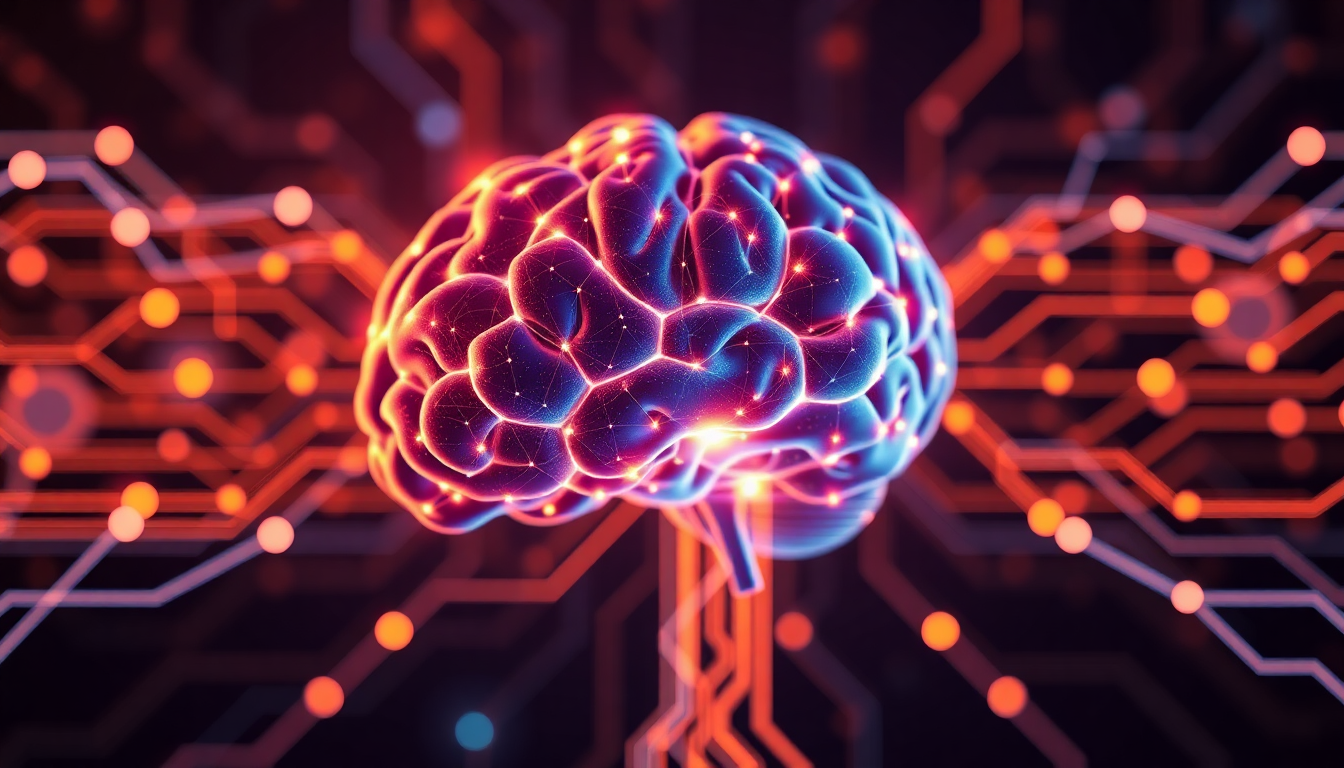
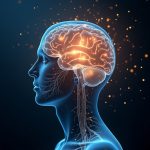


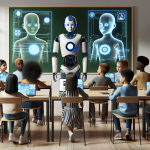
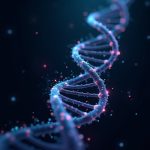
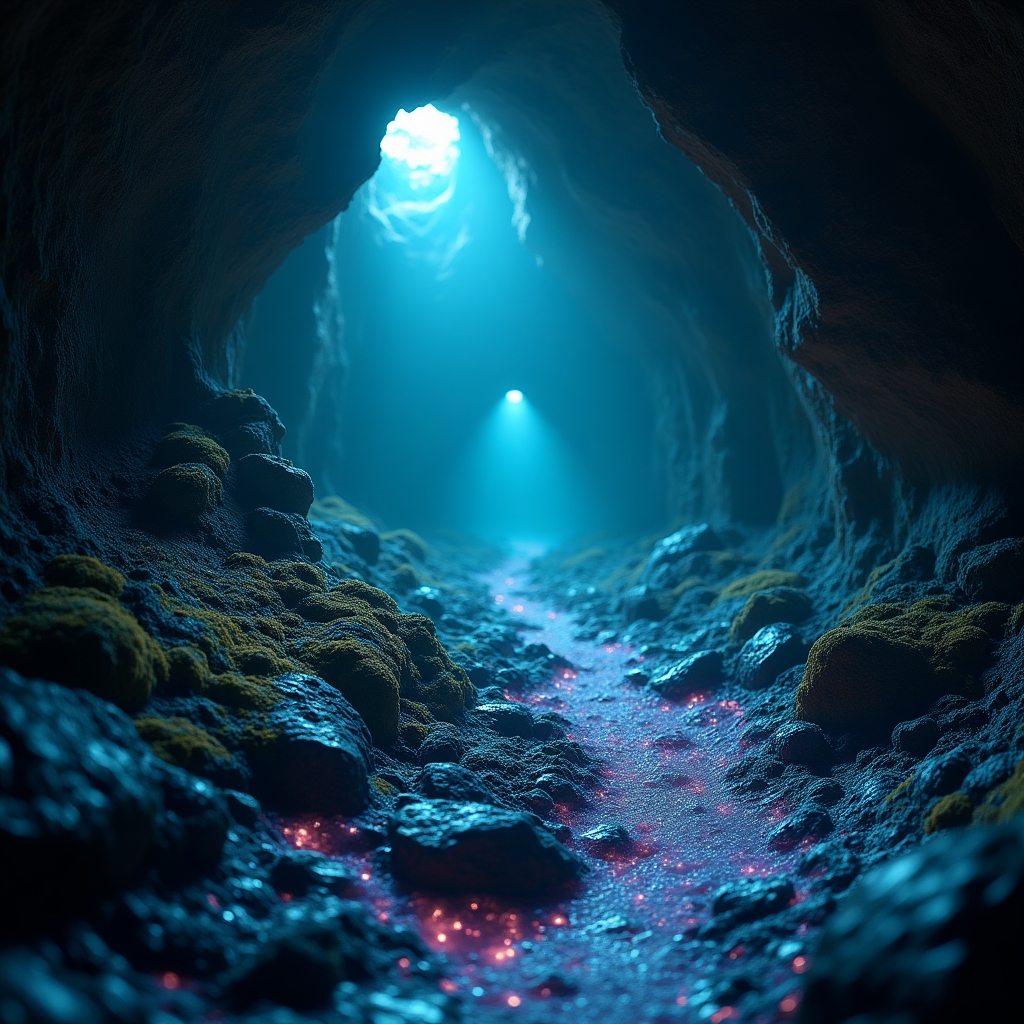

















Post Comment
You must be logged in to post a comment.